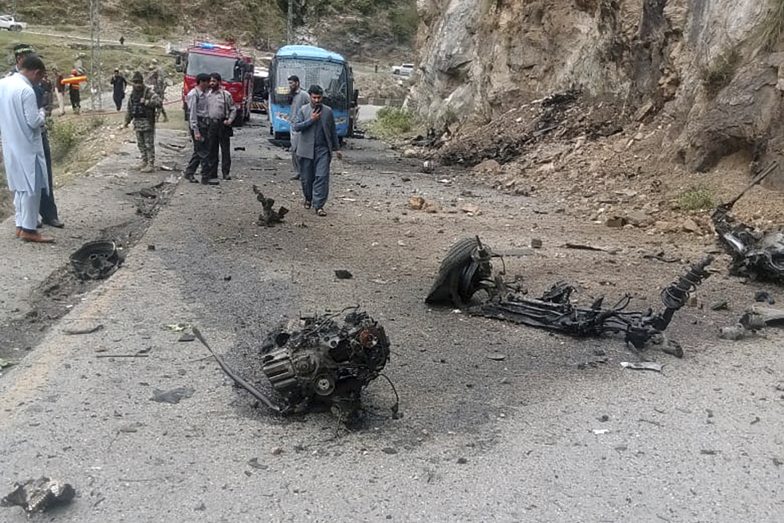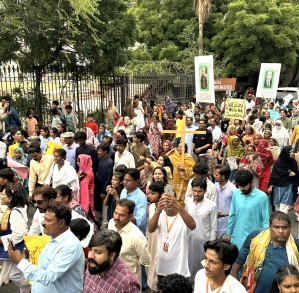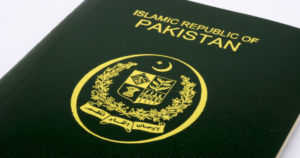
Prime Minister Shehbaz Sharif will be in Beijing next week to formally inaugurate the next phase of the China-Pakistan Economic Corridor (CPEC). Where the first phase, initiated in 2015, focused on infrastructure and energy, CPEC-II will see further development along the 3,000-kilometer network connecting China with the Arabian Sea via Pakistan, in addition to enhancing agricultural cooperation.
Even though work is already underway on CPEC-II, ahead of its formal launch in June, all is not well along the corridor, as Beijing’s dissatisfaction with the progress on CPEC raises question marks over its fate.
Most pertinently, the fresh wave of militant attacks in March targeting Chinese workers, investments, and sites of geostrategic significance has pushed Beijing into going public with its concerns over the lack of security in Pakistan. “We ask Pakistan to take effective measures to protect the safety and security of Chinese nationals, institutions, and projects,” the Chinese Foreign Ministry said in a recent statement, urging Chinese citizens and businesses to “take extra safety precautions” and “do their best to guard against terrorist attacks” in Pakistan. Beijing’s concerns have been expressed much more unequivocally in private.
The Diplomat has learned that in meetings this month between Pakistani government officials, Chinese Ambassador Jiang Zaidong, and Li Chunlin, vice chairman of China’s National Development Reform Commission, Beijing conveyed categorically that CPEC’s future is dependent on the safeguarding of Chinese nationals and investments.
“There is understandable anger within the Chinese ranks over CPEC. They are neither happy with the lack of security, nor with the lack of progress on CPEC since 2018,” said a Planning Ministry official privy to the Joint Cooperation Committee meetings.
Government officials further reveal that the civil and military leadership has political incentives to showcase a swift turnaround in CPEC’s fortunes, hoping to pin the recent setbacks on jailed former Prime Minister Imran Khan. Under Khan’s Pakistan Tehreek-e-Insaf government, Islamabad had sought to renegotiate the CPEC terms, with Khan’s adviser publicly calling for the projects to be put “on hold.”
“What is fascinating is that in all the nonsense over the past two years of how the U.S. orchestrated Imran Khan’s exit, there has been no mention of how much the Chinese wanted his ouster – owing to his government’s sheer incompetence,” remarked a senior politician affiliated with the ruling Pakistan Muslim League-Nawaz.
And yet, even as the civil-military leadership hopes to establish Khan as the root of all ills, at least in front of global powers, the inability to showcase significant development on CPEC is impeding the validation that the current regime so desperately seeks. The major cause for concern, inevitably, remains the rise in militancy, with terror attacks already at a six-year high even before the surge in violence over the past four months.
There were a total of 129 strikes in Pakistan last year, up from 87 in 2022, with 125 of these being carried out in the western provinces of Khyber Pakhtunkhwa and Balochistan. Of the 2023 attacks, 82 percent were orchestrated under the jihadist umbrellas of the Tehreek-e-Taliban Pakistan (TTP) and Islamic State Khorasan Province, along with the ethnic separatist group, the Balochistan Liberation Army (BLA). And the jihadists and Baloch separatist militia appear to have found a common enemy: the Chinese.
“Every time there is an attack on the Chinese in Pakistan, it is worth celebrating. But now the Pakistani military is strengthening its own proxies for similar attacks in Afghanistan,” former TTP spokesperson Ehsanullah Ehsan told The Diplomat.
In recent years, there has been a growing concern among the Islamist parties and groups over China’s treatment of Uyghur Muslims, with many holding the Pakistani state complicit in Beijing’s crimes. “The Pakistani state should declare jihad against whoever is marginalizing Muslims anywhere in the world. What is the point of being the sole Islamic nuclear power?” remarked Ejaz Ashrafi, the co-founder of the radical Islamist party Tehreek-e-Labbaik Pakistan.
The TTP’s growing attacks on the Chinese have seen Islamabad respond with its own customary claim that the attacks have originated in Afghanistan. The finger-pointing between the Pakistan government and the Afghan Taliban regime, with each accusing the other of allowing their territory to be used for cross-border terrorist operations, reflects the unintended consequences of Pakistan’s decades-long quest to bring the Taliban back to power. Now with jihadist outfits and the de facto regime in Kabul both acting independently, the interests of Islamabad, and its global investors, are being compromised in tandem by those who see the Pakistani state as a common enemy.
“Baloch militants and the Taliban become natural operational allies in the rough terrains of Balochistan. It requires a thorough military operation to eliminate these groups in Pakistan. However, militancy itself will be hard to eliminate without passing on the economic benefits of any infrastructural projects to the locals,” said Lt.-Gen. Talat Masood, a former secretary of Pakistan’s Ministry of Defense Production.
While the separatist militia might have formed alliances with jihadists, rights groups and activists warn against the conflation of Baloch nationalism and radical Islamism. “Our nationalist movement is purely for the basic human rights of the locals and for our right to exercise control over our own resources. Fighting for the right to recover the missing persons or questioning the arbitrary killings is not the same as using violence to impose one’s agenda,” veteran activist Qadeer Baloch told The Diplomat.
A growing number of Baloch now view Balochistan as “occupied” territory. As a result, the BLA hasn’t just targeted Chinese nationals, investments, or other symbols of alleged China-Pakistan “imperialism” – such as consulates, five-star hotels, and the stock exchange – but also murdered laborers from other parts of Pakistan, most notably Punjab. This hardening of the militant position makes it easy to discredit the Baloch movement as being aimed at everyone not Baloch, which in turn exacerbates the plight of the Baloch people.
Most critically, this trend reflects the growing divide between the Baloch and other ethnic groups, with the Pakistani majority group – Punjabis – seen as colonial agents. This is further reaffirmed by the added layers of protection provided to Punjab. For reference, only one out of last year’s 129 terror attacks took place in Punjab.
However, for the majority of the locals, the primary concern lies in the fundamentals that the Baloch have long been deprived of. The rights movement Gwadar Ko Haq Do, or “give rights to Gwadar,” in recent years has pointed to the marginalization of the Baloch in the port city, where most of the CPEC projects in Balochistan are situated.
But while many observers see a correlation between provision of fiscal benefits to the Baloch population and an improvement in the security situation, and in turn the continuation of CPEC, others believe the corridor is here to stay regardless. “The risk appetite of China is very high and it will not wrap up and leave even if there are more attacks on its citizens and interests,” said analyst Adnan Aamir, who focuses on Chinese interests in Pakistan.
While local insecurity and politics have hindered the development of CPEC, a major stumbling block has also come from the United States and the International Monetary Fund (IMF), which have dubbed the project a “debt trap” for Pakistan. U.S. legislators and government officials have long warned that they do not want to see IMF money used to repay loans Pakistan took from China.
Islamabad is currently in talks with the IMF to finalize the next bailout package, as the Fund continues to keep Pakistan from the brink of bankruptcy. However, the vicious IMF cycle comes with conditions, including the recalibration of CPEC agreements.
“We have no choice but to get along with both the U.S. and China. Transparency will help prove whether any project or agreement [is a trap or not],” noted former foreign minister Khurshid Kasuri, who was in Beijing earlier this month and held meetings at the Foreign Office representing his think tank, the Institute of Peace and Connectivity.
“I did not get the impression that CPEC was being reconsidered in Beijing, but unless we drastically improve our security situation, no investment is going to come to Pakistan – whether Chinese, American, or Saudi,” he added.



